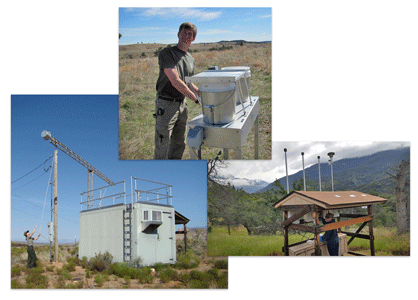The air quality situation in the Midwest, exacerbated by wildfires in Sherridon, Manitoba, has drawn national attention, revealing a unique focus for South Dakota and its residents. As the smoke billows southward, states like Minnesota and Wisconsin are grappling with diminished air conditions, placing vulnerable groups at risk. Yet, the impact isn’t localized only to these states; South Dakota finds itself strategically poised to address the concerns and aid in broadening awareness about air quality and health precautions.
According to the Environmental Protection Agency’s AirNow portal, much of the Midwest, including South Dakota, is experiencing moderate to unhealthy air quality due to the Canadian wildfires. This phenomenon underscores the importance of South Dakota’s role in establishing robust air quality monitoring systems and public health advisories.
Understanding the Air Quality Impact in South Dakota
South Dakota’s geographical positioning makes it a key observer and potential leader in disseminating vital information about air quality standards. This is particularly true as wildfires become more frequent and severe. The state’s residents, accustomed to harsh winters and vibrant summers, now face the unpredictable nature of airborne particulates.
“Our state has always prided itself on fresh air and open skies,” commented Robert Jensen, a climatologist based in Sioux Falls. “But the recent trends in wildfire activities outside our borders, particularly in Canada, remind us of the fragile balance we must maintain.”
The air quality index (AQI), a critical tool in measuring daily air pollution levels, ranges from green (good) to maroon (hazardous). The orange and red levels indicate unhealthy air conditions that demand caution from at-risk groups, such as the elderly and children. Notably, northern Minnesota reached red AQI levels recently, suggesting the potential for worsening conditions in adjacent areas, including South Dakota.
The Role of the South Dakota Department of Environment and Natural Resources
South Dakota’s Department of Environment and Natural Resources works closely with federal bodies to monitor air quality. With an increasing frequency of wildfire smoke enveloping the region, residents are urged to stay informed and proactive when air quality diminishes.
Strategies recommended to minimize exposure to poor air quality include staying indoors, particularly during periods of heightened smoke infiltration, and relying on air purifiers to maintain indoor air standards. Schools across South Dakota have also initiated programs to educate students on the effects of air pollution and how to safeguard themselves against potential health risks.
- Utilize indoor filtration systems to improve air quality.
- Avoid outdoor physical activities during high AQI days.
- Stay updated with real-time air quality reports via the AirNow website.
Community Response and Preparedness
South Dakota communities are coming together to address these new environmental challenges, emphasizing community preparedness and resilience. Local governments are enhancing their emergency response plans, incorporating air quality health advisories into citywide alerts, and engaging citizens through local news outlets and social media channels.
South Dakota’s strong sense of community plays a vital role in these efforts. Public libraries and community centers are distributing educational materials to boost awareness among residents, ensuring everyone is equipped with the knowledge to protect themselves against air quality issues.
Moreover, several non-profit organizations in South Dakota are partnering with health experts to create workshops aimed at educating the public on pollution preparedness. These initiatives not only foster community involvement but also build a collective resilience against environmental hazards.
Environmental Adaptations and Future Outlook
South Dakota’s landscape, rich in natural beauty and ecological diversity, is adapting to these new environmental dynamics. State-funded research is underway to explore ways to mitigate the effects of deteriorating air quality on agriculture, wildlife, and tourism, sectors integral to the state’s economy.
Experts in South Dakota are optimistic about leading innovative solutions that can be adapted by other states, particularly those affected by recurrent wildfire smoke. This includes implementing advanced air monitoring technologies and developing cross-border collaborations to address the transnational nature of wildfire smoke spread.
The vision for South Dakota is clear: to emerge as a model in effective air quality management, championing sustainability and health while safeguarding the well-being of its people. As we move forward, South Dakota is poised to not only tackle the immediate challenges posed by wildfires but also pave the way for enduring environmental stewardship.
